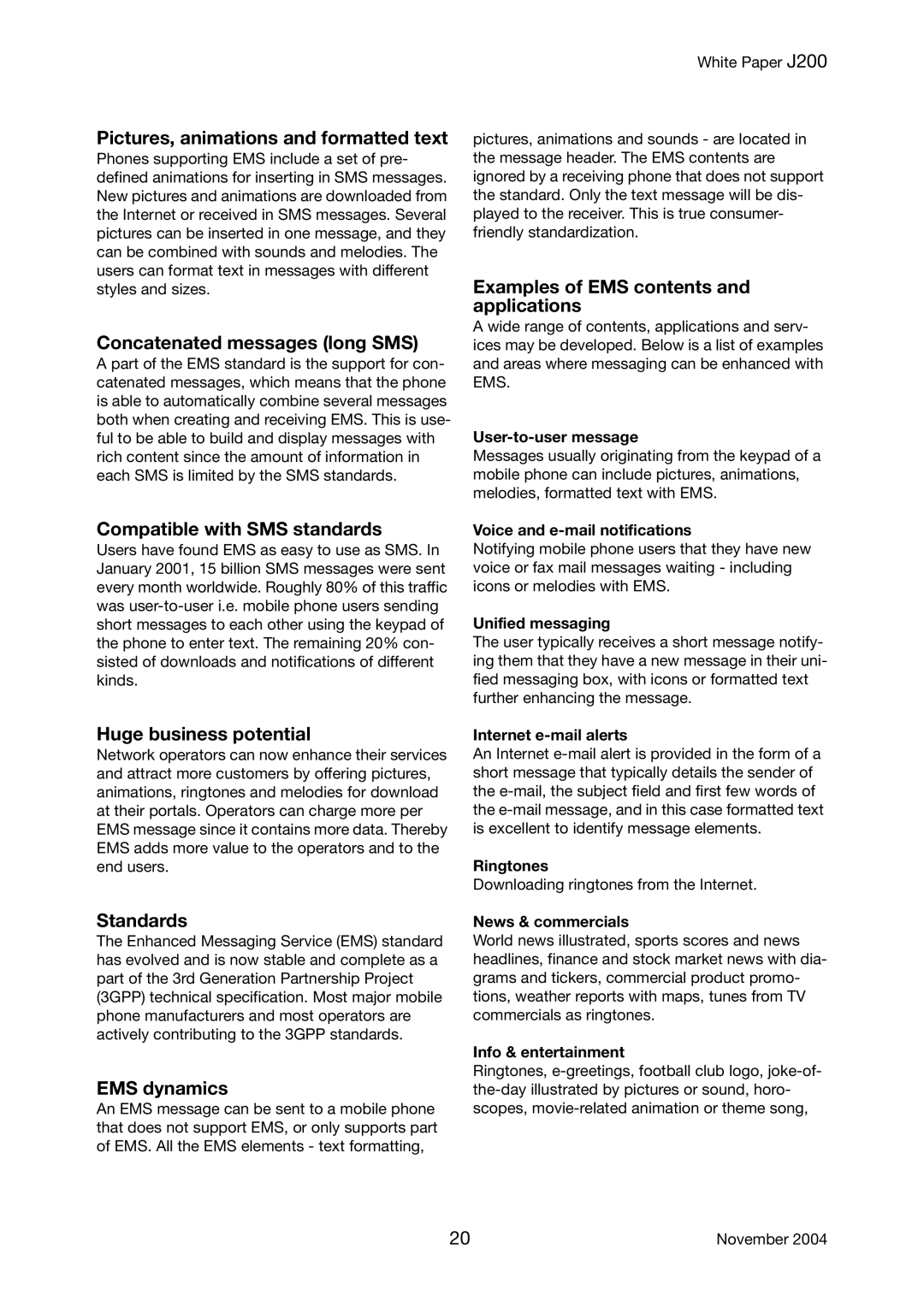Pictures, animations and formatted text
Phones supporting EMS include a set of pre- defined animations for inserting in SMS messages. New pictures and animations are downloaded from the Internet or received in SMS messages. Several pictures can be inserted in one message, and they can be combined with sounds and melodies. The users can format text in messages with different styles and sizes.
Concatenated messages (long SMS)
A part of the EMS standard is the support for con- catenated messages, which means that the phone is able to automatically combine several messages both when creating and receiving EMS. This is use- ful to be able to build and display messages with rich content since the amount of information in each SMS is limited by the SMS standards.
Compatible with SMS standards
Users have found EMS as easy to use as SMS. In January 2001, 15 billion SMS messages were sent every month worldwide. Roughly 80% of this traffic was
Huge business potential
Network operators can now enhance their services and attract more customers by offering pictures, animations, ringtones and melodies for download at their portals. Operators can charge more per EMS message since it contains more data. Thereby EMS adds more value to the operators and to the end users.
Standards
The Enhanced Messaging Service (EMS) standard has evolved and is now stable and complete as a part of the 3rd Generation Partnership Project (3GPP) technical specification. Most major mobile phone manufacturers and most operators are actively contributing to the 3GPP standards.
EMS dynamics
An EMS message can be sent to a mobile phone that does not support EMS, or only supports part of EMS. All the EMS elements - text formatting,
White Paper J200
pictures, animations and sounds - are located in the message header. The EMS contents are ignored by a receiving phone that does not support the standard. Only the text message will be dis- played to the receiver. This is true consumer- friendly standardization.
Examples of EMS contents and applications
A wide range of contents, applications and serv- ices may be developed. Below is a list of examples and areas where messaging can be enhanced with EMS.
Messages usually originating from the keypad of a mobile phone can include pictures, animations, melodies, formatted text with EMS.
Voice and
Notifying mobile phone users that they have new voice or fax mail messages waiting - including icons or melodies with EMS.
Unified messaging
The user typically receives a short message notify- ing them that they have a new message in their uni- fied messaging box, with icons or formatted text further enhancing the message.
Internet
An Internet
Ringtones
Downloading ringtones from the Internet.
News & commercials
World news illustrated, sports scores and news headlines, finance and stock market news with dia- grams and tickers, commercial product promo- tions, weather reports with maps, tunes from TV commercials as ringtones.
Info & entertainment
Ringtones,
20 | November 2004 |
